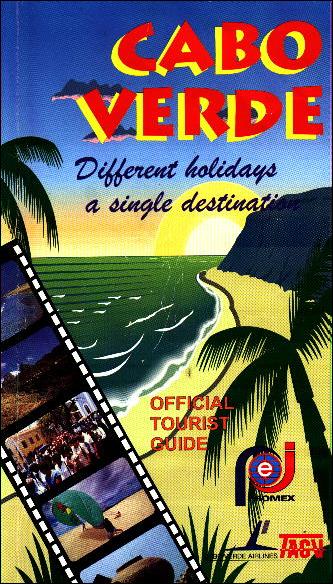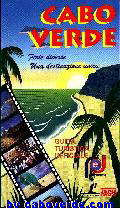

|


|

|
Location
The island of Sal, in view of its close proximity to the African continent, has a climate very similar to other zones with the same latitude.
It is a very arid island, and although volcanic in origin, constant erosion throughout its history has made it almost flat. The highest point is MONTE VERMELHO, with a height of 406 m. History
Sal was discoverd in 1640 and was first known as LLANA or PLANA meaning "flat'. It was given its present nome when a lagoon in a crater of an extinct volcano was discovered and in this place, after the rains, salt was produced. This crater is now known as PEDRA DO LUME. Cultural Events Religious and other Festivals The majority of the popular festivals and celebrations were also imported from the other islands, for example: CARNAVAL 19TH OF MARCH - The festival of S. José in PALMEIRA 3RD QF MAY - Celebration of Santa Cruz JUNE/JULY - The festival of the Popular Saints: St.Antonio, S.João and S.Pedro, respectively in PEDRA DO LUME, ALTO S.JOÂO and HORTELÃ. 15TH OF AUGUST - The festival of S.ra da Piedade (Our Lady of Pity) in PEDRA DO LUME. 15TH SEPTEMBER - Municipal Celebrations Handicraft Sal doesn't have its own particular handicraft as such but all the interesting articles from the rest of the Archipelago can be purchased here.
Food and Drink Fresh fish and shellfish, grilled and accompanied with vegetables, are the main items on the menus in the restaurants in SANTA MARIA and ESPARGOS. The very typical, richly condimented cooking of Cape Verde is a unique, delectable experience. The "arroz de marisco" shellfish deliciously cooked with rice is a speciality to be found at the "Pescador".
Entertainment and Sports
The sea is the main attraction and the tourist complexes in SANTA MARIA have all the facilities necessary for the practice of sea sports and provide instruction for beginners if required. Places to Visit
Without a doubt, the most picturesque place on the island is PEDRA DO LUME, the name given to a crater of the now extinct volcano. Entry to the crater was made possible by means of a artificial tunnel built in 1804. The crater is at sea-level, and even though the sea is 1 km away the water manages to filter in.
The salt pits of Santa Maria, although not in use anymore, are well worth a visit and lie about 1 km from the town. VILA DE ESPARGOS, which got its name from the vegetation growing there, is also interesting to visit.
|



|



|


|
GENERAL SERVICES |











